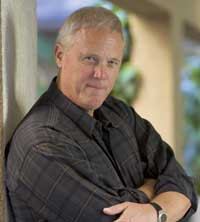Mix It Up
This summer, Shea will unveil its latest project: Trio, a $70 million mixed-use project in the playhouse district of Pasadena, Calif. Directly on the path of the Rose Bowl Parade, this project is certain to catch the eye of many who pass by. As the company’s first entry into the L.A. market, Trio will include 304 luxury apartments, 15,000 square feet of retail, a three-story garage, and the adaptive reuse of a historic building. And the building’s appearance is just as diverse, dubbed “Trio” because of its three distinctive architectural treatments—urban, contemporary, and traditional Spanish.
With so many different parts working in tandem, Trio is an extremely complex project. But Shea Properties wouldn’t have it any other way. They have been building these type of mixed-use projects for more than a decade, long before it was the “in” thing to do. Often, Shea Properties will develop such a project entirely in-house, drawing upon its diverse capabilities as a commercial and residential developer. “We really do see mixed-use as a strategic advantage because we can do all those product types internally without having to go to an external source to do it,” says Shea senior vice president Gause.
(For Trio, though, Shea Properties partnered with Capital and Counties USA—a wise choice, since the San Francisco-based development firm owned the land).
Mixed-use is a natural fit for the company, adds Tom Wermers, CEO of San Diego-based Wermers Multi-Family Corp., which serves as general contractor on all of Shea’s apartment projects. “They know from the beginning of the project what it’s going to cost and how it’s going to lease, both on the commercial side and the residential side,” says Wermers. “They have all the people within their organization to be able to deliver on what they promise.”
Plus, the company has the financial backing of its parent company, which helps them tackle these larger, more complex types of projects. “They [J.F. Shea Co.] are extremely well-capitalized,” says Stack of SARES?REGIS Group. “They have tremendous sources of debt and bank lines.”
One such complex project: Waterford Place, perhaps Shea Properties’ most well-known mixed-use project, which opened in Dublin, Calif., in 2003. This colorful, highly successful project encouraged developers across the Golden State to tackle the vertical mixed-use structure—housing stacked on top of retail shops. “Waterford was very cutting-edge when we built it,” says Alley of Architects Orange. “And I still get calls from people who just walked the project and think it’s great and want to do something similar.”
Shea’s next mixed-use project (its first transit-oriented site) promises to be even more challenging than Trio. Cedros Crossing in Solana Beach, Calif., will include 33,000 square feet of commercial space, a 500-space parking garage for transit and bicycle users, and Lofts at Cedros, which will be a 141-unit rental component.
At the top of the project’s long list of complexities: Working with the public transportation entity, North County Transit District. “We are having to adjust to the pace of the public entity,” says Gause. “We are geared towards working at a much quicker pace with much quicker decision making than the structure of the deal will allow.” The project is expected to stabilize in 2009.
